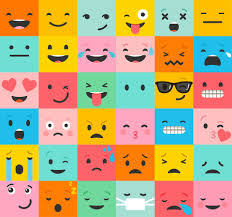4.4 Sociology of Emotions

What exactly are emotions, and how can we understand them sociologically? Sociologist Peggy Thoits (1989) provides one definition; she argues that emotions have four components (figure 4.5). First, there has to be some kind of situational stimulus. As an example, someone could express something you dislike. Second, there is some physiological change or bodily sensation. Your breathing could change, or your heart rate increases. Third, there is an expressive gesture. You smile, frown, or move your body in a particular way. Finally, there is a label applied to at least one of the first three components. These labels can vary from society to society and group to group.
While sociologists tend to argue that emotions are socially constructed, some social scientists argue that every society has the same set of basic emotions. Specifically, positivists argue that people can universally identify fear, surprise, anger, disgust, sadness, and happiness. From this perspective, all other emotions are some combination of these basic emotions. Using pictures of people’s facial expressions, there is perhaps some evidence for this. Yet this narrow focus on facial expressions misses many nuances and cross cultural differences in understanding and expressing emotions. It further ignores how emotions can be connected to inequalities.
4.4.1 Emotion Work
Within social psychology, one influential concept to understand emotion is emotion work, which entails either suppressing or evoking a particular emotion (Hochschild 1979). How often have you been in a situation where you felt something, but were not allowed to express it? If you have worked in a job that interacted regularly with customers, you may have wanted to say or express something, but were not able to because of the informal or formal rules that were in place. Here you may have been suppressing your emotion. Other times you may have found yourself in situations where most people were expressing a particular emotion but you were not. This may lead you to evoke the same emotion. For example, maybe you attended a wedding where you were ambivalent about the couple or had other things going on in your life. Once you were in that situation, where everyone else was seemingly happy, you evoked the same emotion.
There are a variety of ways to evoke or suppress an emotion. First, you can change what you are thinking. You can think happy thoughts or think sad thoughts. You can invoke an image that you relate with a particular emotion. Second, you can attempt to change bodily sensations. For example, you could change your breathing. Third, you can change your expressive gestures. You could put on a smile or frown.
4.4.2 Surface and Deep Acting
Sometimes there is a disconnect between what we are feeling and how we present ourselves. This is called surface acting. This is a change in body language, tone of voice, or facial expression but not a change in feeling (Hochschild 2012). This might mean engaging in behavior that one feels to be false. It involves trying to act the part expected in a particular situation, even if it doesn’t match your underlying feeling. The example could be putting on a friendly smile for a customer that is getting on your nerves.
Other times you engage in emotion work and end up actually feeling the emotion you want to express. This is called deep acting, an intentional, self-induced change in feeling itself (Hochschild 2012). You change your emotions to meet the expectations of the part you are playing in a situation. So you might have to put on a friendly demeanor for your work, even when it might not match your underlying mood. But in doing so, you actually start to feel happy.
The management of emotions is closely tied to the existing inequalities within a society. Along the lines of gender and race, different emotions are seen as acceptable for different groups (Bonilla-Silva 2018; Wingfield 2010). As an example, people often expect men to express a limited range of emotions, such as those revolving around anger (Jackson and Wingfield 2013).
4.4.3 Licenses and Attributions for Sociology of Emotions
“Sociology of Emotions” by Matthew Gougherty is licensed under CC BY 4.0.
Figure 4.5. Emotions Images. By Dan Baum. Licensed under CC0 1.0. Public domain, via Wikimedia.
